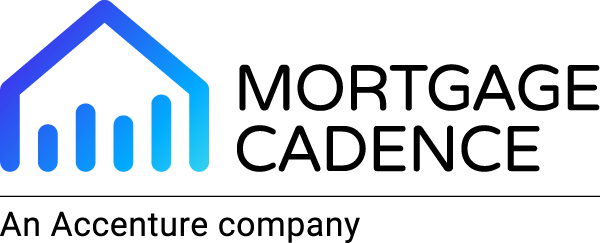A Fresh Perspective on an Age-Old Question
For a long time, since mortgage technology executives combined two or more software applications into the first “platform,” lenders have been debating whether to opt for an all-in-one system or one that combines best of breed tools. They are still asking, “Can we trust a single vendor to provide all of the technology we need, or should we hedge our bets by working with a number of FinTechs who together complete the tech stack?”
Age-old questions such as this are important, and open, because they are hard to answer. Or they seem hard to answer. Mortgage Cadence, on the other hand, answered it long ago. We built one complete loan origination system inclusive of an online borrower portal and complete with imaging and closing documents. We took this approach for three reasons:
1. Assembly Lines are Efficient
The assembly line analogy, though overused, is applicable here. There’s a reason assembly lines tend to run in one, long straight line: it works. And so it is with technology. The more harmoniously linear your platform, the more efficient your process. One system accomplishes this in the most straightforward way. We saw that in 1999. It holds true today.
2. Integration is Hard
Hard does not mean impossible. Hard does not mean integrating systems should not be investigated. Too often, though, we hear, “we’ll just integrate that, whatever that is, there’s nothing to it.” Dismissal of the effort required is endemic; the fact is there is a lot to integration. Getting it right takes time. Cobbling together a platform out of “best of breed” applications is nearly impossible -- even if you believe you have an objective method for choosing the best tools.
The rapid pace of technological change would render your best of breed platform out of date, if not completely obsolete, by the time you got it all implemented. The setup time to connect systems that were not originally designed to speak to each other, not to mention optimize workflows and troubleshoot accordingly, is not simple, intuitive, or easy.
Getting it right also takes money. Today’s lenders have neither time nor money. The single most important thing lenders can do today to satisfy borrowers is this: get them to the closing table fast. Really fast. JD Power says the most satisfied borrowers close in 30 days or less. Put your time and energy into rapidly closing every single loan and do it in under a month. Integrating disparate technologies distract from this singular goal during the integration process and after. Systems linked together require time and attention. That’s time and attention better focused on the race to the closing table.
3. One System is Simple
Having everything in one place simplifies so much. One system to administer. One system to secure. One system to mitigate risk. The best way to mitigate risk is to simplify the system used to originate loans and outsource the development and maintenance of that system to a trusted partner. Then, make a single executive responsible for the relationship. This makes so much more sense than sending banking executives to digital mortgage conferences in search of shiny new technologies that require new relationships. After all, someone has to manage the implementation and maintenance of these new tools.
One system also means one home for your mortgage data. One place for your team and your borrowers to interact. Putting all efforts into one system simplifies the singular goal of getting borrowers to the closing table in less than 30 days. It also makes your process and your teams more efficient and more productive. This leads to the second reward. In addition to satisfied borrowers, highly productive lenders enjoy a guaranteed lower cost to close. Simple equals profitable.
The Best of Breed Approach
There’s an argument to be made that one, single, all-inclusive platform cannot be all things to all lenders. Or borrowers. Technologies that solve for discreet portions of the mortgage process have blossomed in recent years, raising the best of breed argument to newer, more tangible levels. Where the historic best of breed argument was more theoretical with far more limited options, today the possibilities are practically limitless, making concrete best of breed more attainable.
Attainable, yes. Easy, no. Which takes us back to our earlier point. While possible, is the time spent building, maintaining, constantly training teams and adjusting processes worth the time and effort? It’s a story problem akin to those we all faced in first year algebra: if car A is 60 miles away from the destination traveling at 35 miles an hour and car B is 70 miles away from the same destination traveling at 65 miles an hour, which car arrives first? Best of breed or all-in-one? It’s up to each lender to decide which car, if you will, is which. Getting to the destination, which is the fastest possible close, makes that decision easier. Pick the car that gets there first.
A Compromise – Comprehensive with an API Surface
All-in-one systems make the most sense in today’s mortgage environment because time and attention away from borrower satisfaction is time wasted. There is a middle ground, however, that was not an option when this decades old debate began. Application Program Interface (API) layers available in today’s all-in-one platforms make combining best of breed with all-in-one platforms an easier option than in days past. That said, putting APIs to work takes time and effort just like integrations take time and effort. The question for lending teams, once again, is this: is the time and effort spent building technology worth the outcome or is it better spent on people and process work using existing technologies to accelerate the home financing process?
Keeping it Simple
Mortgage lending is a complex business. Truth is it has always been that way, made more so today by complex regulations layered on top of borrower expectations fueled, perhaps unrealistically, by other online experiences. What’s a lender to do? Keep it simple. Focus on what’s important. Your borrowers are unlikely to remember their online mortgage experiences and are less likely to give your technology much thought. Why? They won’t use it again for five or more years. By that time it will have changed again. What they will remember is their lender closed their loan in less than a month. And they’ll tell their friends.



